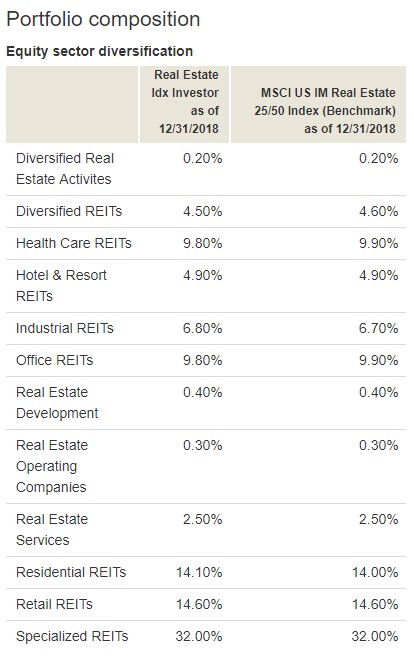I’ve always heard that real estate is the path to wealth. You probably have too.
For many Americans, that means your primary residence. You buy it, you make your mortgage payments, and those “forced savings” plus property appreciation result in equity that often makes up a large percentage of your net worth.
For others, it means investing in real estate outside of your home. In some cases, it means becoming involved in real estate syndication deals.
Real estate syndication is how regular investors, like myself, are able to get involved in multi-million dollar real estate deals.
In fact, it’s how I got involved in a real estate syndication’s purchase of an $8.15 million 98-unit apartment community in Arizona with a projected internal rate of return (IRR) of 14-18%.
The key is understanding how real estate syndication work, how to find a syndicate you can join, and how to vet them so you get a solid return:
Table of Contents
What is Real Estate Syndication?
A real estate syndicate is when a group of Investors put money into a real estate transaction put together by a Sponsor.
The easiest analogy is if you and a few friends want to run a laundromat. Laundromats are expensive to start because you have to get the building, get all the cleaning equipment, etc. They are, however, relatively easy to operate compared to other businesses.
So you and a handful of friends (Investors) put together some money and another friend (Sponsor) offers runs the place. The Sponsor gets paid a salary for running the laundromat, as any operator would, and everyone gets a share of the profits.
In a real estate transaction, it’s pretty much the same. The Investors contribute money on the deal and the Sponsor puts in sweat equity and, oftentimes, a bit of his or her own money as well. Investors often contribute anywhere from 80-95% of the total capital, with the Sponsor picking up the rest.
How are real estate syndicates structured?
They are structured like most other real estate deals – usually as a Limited Liability Company (LLC) but sometimes as a Limited Partnership (LP). In the case of an LP, the Sponsor is the General Partner/Manager whereas the Investors are limited partners or passive investors.
This means that your organization will have Operating Agreements (LLC) or a Partnership Agreement (LP) – you will want to read this carefully because they outline how distributions are paid out, how voting rights are established, as well as any fees the Sponsor gets prior to distributions. Everything important will be captured in one of those documents.
Real estate syndication deals have a lot of different structures. For example, I’m involved in a syndication deal where the “distribution waterfall” is:
- First, Class A Members (Investors) get 8% on our contributions (preferred return);
- Then, we are distributed 70% of the remaining distributable cash;
- Then Class B Members (Sponsors) get 30% of the distributable cash.
Of the distributable cash, Investors will get 8% on their capital investments before the Sponsors get a share of the rest. This, and much much more, are outlined in the Operating Agreement.
There are four primary factors to research in a distribution:
- Return of Investor’s Capital – How will your money be paid back to you. Often, the investors are paid back first before the sponsors.
- Preferred Return – On distributions, preferred return is how much get paid to investors first. In the above case, the preferred return is 8%.
- Catch-Up Clause – If present, the sponsor gets 100% of distributions up to the catch-up clause before carried interest. In the above case, there is no catch-up clause.
- “Carried Interest” – After all is said and done, this is how the profit is split between investors and sponsor. In the above case, the split is 70/30.
There are also fees, here are the ones to keep an eye out for (not an exhaustive list):
- Acquisition fee – This is the fee paid for closing the fundraising and it includes finding the deal, organization, and purchasing the property.
- Financing fee – If there is financing involved, this is the fee for procuring the acquisition loan.
- Management fee – This is how much the sponsor is being paid to manage the assets of the company.
- Property management fee – This is how much the sponsor is being paid to manage the property.
- Disposition fee – This is how much the sponsor is paid when the property is sold.
That’s just capturing some of the broad strokes of each deal – you need to review the subscription documents and other legal documents to get the full picture. It’s important because all those fees add up, especially when you are talking about the sums of money required for a multi-million dollar real estate deal.
How do syndications differ from REITs?
A real estate investment trust (REIT) is a fund that invests in real estate. Some REITs are publicly traded, others (like Fundrise) are not.
If you look at the top 10 holdings of Vanguard Real Estate Index Fund (VGSLX), it’s a list of publicly traded companies (except #1, which is their own fund):
- Vanguard Real Estate II Index Fund (VRTPX) – Vanguard’s institutional REIT that holds a similar set of companies
- American Tower Corp.
- Prologis Inc.
- Crown Castle International Corp.
- Equinix Inc.
- Public Storage
- Dgital Realty Trust Inc.
- Simon Property Group Inc.
- SBA Communications Corp.
- Welltower Inc.
If you research those companies, you have a wide variety of real estate property types. American Tower Corp owns wireless and broadcast communication infrastructure. Simon Property Group owns commercial real estate and the largest operator of shopping malls. Public Storage is, well, the orange public storage company.
It’s real estate diversification in a single transaction.
And if you look at the percentages based on real estate type, it’s much of the same.

See? A little of everything. As a real estate investor, you can’t beat the simplicity.
Here are a few key ways syndications are different from REITs:
You are buying a single property. With a REIT, you may be investing in a variety of properties. With a real estate syndication, you’re usually buying into just one. It may be a big one, like an apartment complex, but it’s still a single property.
You must be an accredited investor for real estate syndication. A real estate syndication is really a private placement (private sale of stock in the LLC/LP that will hold the property) and that means you need to be an accredited investor to participate. A REIT is publicly traded and has no such restrictions.
Much higher minimum investment amounts. Sponsors don’t want a lot of investors. In fact, to remain compliant, they have to keep the numbers small. This means the minimum investments will often be $25,000 or higher. If you want to raise $2.5MM, then even at $25,000 you’ll need a hundred investors. That’s way too many. You can buy a share of Vanguard’s Real Estate ETF (VNQ) for less than a hundred bucks.
It is a private non-public transaction. When you invest, you’re often required to hold until the end. If you want to liquidate your position, you’ll have to check your Operating Agreement to see how that’s done. It’s not as simple as hitting “Sell/Redeem” on your shares in a REIT. In this regard, your capital is locked up and more illiquid than with a fund.
If things go south, you’re on your own. Like any deal, syndications are based on trust. If your sponsor is looking to cheat you and the other investors, by inflating costs (and pocketing them) or shirking on their duties, there’s not much you can do unless you’re there on day-to-day basis. It’s less likely to happen with the publicly traded companies in a REIT.
You can get better returns but you will definitely have higher fees. Vanguard’s REIT ETF (VNQ) charges just 0.12%, a pittance because they are such a large fund. You will likely pay more in any syndication simply because you don’t have the economies of scale. That said, Vanguard’s REIT ETF has a ~8.5% return since 2004 – hopefully, you can do better.
Are real estate syndications passive?
Passive income is wonderful.
Unfortunately, real estate syndications appear to be passive but really they aren’t. As an investor, you don’t have to operate the property but you can’t sit back like you would with a REIT. You have to analyze the opportunity, do your due diligence, and make decisions.
Since a lot of your eggs will be in that one basket, you will also need to review financial statements, like income statements and balance sheets, to make sure everything is still operating within the projections. You have to do this because you can’t be sure anyone else is.
So it’s passive in the sense you don’t have to find renters, collect rent, evict non-paying renters… but it’s not completely passive.
How to find a real estate syndicate?
Finding people who need funding to do real estate deals isn’t hard – there will always be real estate deals and operators who need funding but can’t get it for their deal. It could be they have a limited track record, they don’t have collateral, the deal is too small for a bank, or other risk factors.
The easiest way is to work with a crowdfunding platform, more on that below, but if you want to avoid those… you just need to meet other real estate investors or operators. I learned about the two syndications I’m involved in through word of mouth. When you start making investments, you start talking with fellow investors about how deals are structured, what is typical, and how to vet the terms. They will also start bringing deals to you to get a second opinion and that’s how you learn about them.
I had no hands-on real estate investing experience before dabbling in these two real estate syndications, but I understood investing. I knew the internal rate of return I’d need to have to be enticed by a riskier relatively illiquid deal (compared to the stock market).
How does crowdfunding fit into the picture?
Crowdfunding platforms make it easier to find syndication deals. If a platform offers an investment into individual properties, you’re really looking at a syndication deal.
As is the case with any private investments, the biggest challenge is deal flow. To find good deals, you have to see a lot of deals, analyze them, and only invest in the ones that meet your criteria. If you don’t see a lot of deals, you may be tempted by sub-par deals, weaker operators, and other negative issues just to be invested.
Crowdfunded real estate sites act as a magnet for deals. If you are a sponsor, and you don’t have a ready pool of investors, it can be hard to find investors. So the sites act as a magnet for sponsors and investors, making everyone’s lives easier while taking a small cut (a percentage when the deal is completed plus a percentage of the distributions).
Before crowdfunding, it was harder to find syndication deals. You had to already know real estate investors, scour online forums or other groups, and you had to do the due diligence yourself with no filter.
One thing you will learn very quickly if you decide to invest outside the stock market, you have to filter through a lot of bad investments. With crowdfunding, at the very least, you have a rough filter that gets rid of the truly bad deals before you even see them. (and I’d argue the failure of RealtyShares shows hard it is to do this at scale)
If you are an accredited investor who wants to find individual properties, I’d check out the deals on RealtyMogul and EquityMultiple.
If you aren’t, or prefer crowdfunded real estate funds, take a look at Realty Mogul or Fundrise. With funds, you do not need to be an accredited investor. With funds, you don’t even have to do any due diligence on individual deals. You can invest in their funds, which often have very specific investment criteria, and simply collect distributions. The benefit of a fund is that you get diversification across many properties, rather than being subject to the fortunes of a single one.
Have you considered real estate syndication?




Syed says
I’ve been looking into this recently mainly because I don’t know too much about it. Fundrise seems to be a good option but even that is going to require some more research. Since investing in almost any kind of real estate is pretty illiquid, I’m going to stick with my priority list and focus on paying off my remaining debt and maxing out my IRA’s.
It would be nice to qualify as an accredited investor so I might look into some opportunities a few years down the road. Interesting stuff though.